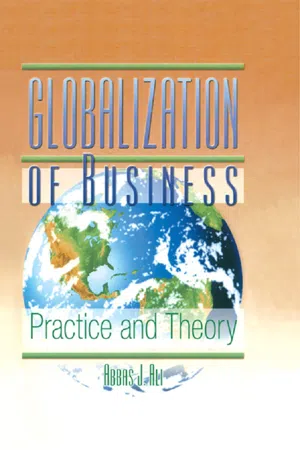Business
Simple Structure
Simple structure in business refers to an organizational design with a clear, centralized authority and a low level of departmentalization. It is characterized by a flat hierarchy, direct lines of communication, and a focus on flexibility and adaptability. This type of structure is commonly found in small businesses or startups, where decision-making is centralized and there is minimal bureaucracy.
Written by Perlego with AI-assistance
Related key terms
Related key terms
1 of 4
Related key terms
1 of 3
10 Key excerpts on "Simple Structure"
- eBook - ePub
- Russell Hoye, Milena M. Parent, Russell Hoye, Milena M. Parent(Authors)
- 2016(Publication Date)
- SAGE Publications Ltd(Publisher)
The structure of an organization is a primary aspect of the implementation of strategy and how the organization ultimately functions in terms of information flows, decision-making and power distribution. Due to its centrality to senior management's ability to implement strategy and achieve change, Carpenter and Sanders (2009) refer to organizational structure, along with systems, processes, people and rewards, as the major “implementation levers” of organizations. Carpenter and Sanders go on to define organizational structure as, “the relatively stable arrangement and division of responsibilities, tasks and people within an organization” (p. 367). The structure of an organization, therefore, is the means by which information flows efficiently from the people and departments that create it to those who are required to act on it. Essentially, organizational structure performs two key functions: (i) it facilitates control; and (ii) it enables the coordination of information, decisions and activities of organizational members at all hierarchical levels. In achieving these two key functions, Slack and Parent (2006) suggest that organizational structure is founded upon three basic tenets: complexity, formalization, and centralization.The basic tenets of organizational structure
The three structural dimensions of complexity, formalization, and centralization have been empirically established as measures of organizational structure; each one is explored separately in the following subsections.Complexity
Complexity refers to the differentiation of the organization, or the degree to which the organization is broken down into various subunits. Differentiation can be examined in three main ways: horizontal, vertical, and spatial differentiation.Horizontal differentiation may be undertaken through departmentalization, or the creation of separate functional and/or geographic departments. Departmentalization is the formation of discrete departments according to the various products, services, functions, or geographic locations that the organization operates in. The process of departmentalization will typically feature elements of specialization – the employment of individuals with very specific skills and training. For example, as a sporting event grows increasingly large, it becomes necessary to employ individuals with formal training and experience in areas such as marketing, sponsorship, volunteer management, or risk management. Obviously, increasing specialization and departmentalization leads to correspondingly higher levels of complexity because communication and the coordination of activities across subunits tends to become increasingly challenging.Vertical differentiation refers to the number of tiered levels in a sport organization. So where an organization has high vertical differentiation with many layers of management, we would describe it as “tall;” while organizations with fewer vertical layers of management are referred to as “flat.” Horizontal differentiation and vertical differentiation tend to be interrelated, so as the organization increases in size, so it becomes more horizontally and vertically differentiated (Blau and Schoenherr, 1971). The increase in vertical differentiation primarily results from what is known as “span of control” – the number of individuals that any one manager can directly monitor. A sport organization that employs highly trained professionals will tend to be flatter in structure and have a wider span of control with one manager able to effectively coordinate a large number of skilled workers. Conversely, where there is a requirement for the employment of lower-skilled workers, the structure becomes taller as the span of control must necessarily decrease with an increased need for more direct management supervision. To illustrate, trained clinicians working for a sport medicine clinic will not need direct management supervision for the clinic to run efficiently because their extensive personal training and experience acts as a proxy for control and coordination. Meanwhile, volunteers working at a large event will often come to it with little or no experience, so they will need comparatively more direct supervision as a method of control. - eBook - ePub
- Tom Craig, David Campbell(Authors)
- 2012(Publication Date)
- Routledge(Publisher)
This is a very simple principle which states simply that any given person in an organisation should report upwards to only one superior or, ‘one person, one boss’. To some people, this may appear a rather obvious and common-sense approach to management, but as we shall see, it is not universally observed.Unity of command offers some key advantages. The most obvious of these is that it avoids any confusion on the part of the subordinate as to who to take orders from. Its disadvantages include the possibility that ‘taking orders’ from one boss may extinguish the subordinate’s flair and creativity. The lack of observance of the principle of unity of command is the basis of non-hierarchical organisational structures.Structure: the ‘Shape' of a Business
The structure of an organisation indicates the ‘shape’ of the business, and is often described in terms of ‘height’, ‘width’ or complexity.Height refers to the number of layers that exist within the structure. The guide to how high an organisational structure should be depends upon the complexity of the tasks that a proposed strategy entails. A small, single-site manufacture will typically be involved in competing in one industry, sometimes with a single product type. This scenario is much less complex than a multinational chemical company that competes in many national markets, in several product types and with a high dependency on research and legal regulations. Essentially, height facilitates the engagement of specialist managers in the middle of an organisation who can oversee and direct its many and varied activities. Not all organisations have this requirement and it would be more appropriate for such organisations to have a flatter structure.Tall and Short Structures
Tall structures, involving more layers of specialist managers, enable the organisation to co-ordinate a wider range of activities across different product and market sectors. It is more difficult for senior management to control and is more expensive in terms of management overhead costs (Figure 21.4 - eBook - ePub
Organizations
Structures, Processes and Outcomes
- Pamela S. Tolbert, Richard H. Hall(Authors)
- 2015(Publication Date)
- Routledge(Publisher)
Structure is a defining and crucial aspect of any organization. One way to think about structure is as the arrangement of organizational parts, similar in some ways to parts of a building. Buildings have doors through which we enter. Organizations, too, have “ports of entry,” such as the admissions office for undergraduates at a university or the hiring department in a business firm. Hallways govern our movements and the forms of activity in a building. Organizations have rules and procedures about how things are to be done, which direct the behavior of their members. Some buildings are small and simple, such as a garage; others are complex and multilayered, with intricate linkages and passageways to other buildings. Similarly, some organizations operate in a single location and have only a few different types of jobs; other organizations operate in many sites, nationally and internationally, and have a wide array of divisions and jobs. In some buildings, the heating and air-conditioning are centrally controlled; in others, each room is essentially autonomous and its temperature is determined by occupants. Likewise, organizations vary in the degree to which people and units are given autonomy in decision-making.The building analogy isn’t perfect. For example, the structure of most buildings rarely changes significantly over time. Although organizational structure has a strong tendency toward inertia, most structures do change (sometimes slowly, sometimes very swiftly) as they are influenced by successive waves of members, interactions among the members, and changes in environmental conditions. However, the analogy provides you with a general sense of how structure affects an organization.Defining Organizational Structure
But how do we define structure exactly? There is no single, agreed-upon definition, and indeed, there is wide variation in the ways people have defined this concept. Chester Barnard, in a famous early analysis of organizations, offered the following characterization of structure: “all complex organizations are built up from units of organization, and consist of many units of ‘working’ or ‘basic’ organizations, overlaid with units of executive organizations …” (1968:113). Robert Merton, whose students helped define organizational sociology as a distinctive subfield, suggested that structure “involves clearly defined patterns of activity in which, ideally, every series of actions is functionally related to the purposes of the organization” (1957:195). Peter Blau, a well-known organizational researcher, defined structure simply as “the distributions, along various lines, of people among social positions that influence the role relations among these people” (1974 :12).One reason that there may be little agreement on a definition of structure is that many scholars have tried to define it broadly enough to encompass both informal and formal aspects of organizations. Informal structure involves norms and social expectations that are not officially prescribed by an organization, but that can be a very powerful force in channeling people’s behavior. Formal structure, on the other hand, refers to explicit organizational specifications, such as who is to do what kinds of tasks or jobs, and how these are to be done (including when and where). In offering our own definition of structure, we distinguish between these two aspects. Thus, formal structure refers to the official, explicit division of responsibilities, definitions of how work is to be done, and specifications of relationships involving the members of an organization. Informal structure refers to the unofficial divisions, definitions, and relations that emerge over time in an organization. As we suggested above, structure (both formal and informal) is important because it shapes people’s behavior. Under most circumstances, people enact behaviors that are consistent with structural prescriptions. But you should also recognize that people’s behaviors are the source of changes in structure over time. This relationship is sometimes referred to as structural duality: “structures shape people’s practices, but it is also people’s practices that constitute (and reproduce) structure” (Sewell, 1992 :4; see also Giddens, 1987 ). Under what conditions individuals are most apt to deviate from structural prescriptions and when such deviations will result in changes in existing structure (i.e., general acceptance of new ways of doing things) are questions with which contemporary organizational theorists are still wrestling (Barley and Tolbert, 1997 ; Scott, 2007 - eBook - ePub
Industrial Engineering Foundations
Bridging the Gap between Engineering and Management
- Farrokh Sassani(Author)
- 2016(Publication Date)
- Mercury Learning and Information(Publisher)
UBC Continuing Studies is an academic unit that inspires curiosity, develops ingenuity, stimulates dialogue and facilitates change among lifelong learners locally and internationally. We anticipate and respond to emerging learner needs and broaden access to UBC by offering innovative educational programs that advance our students’ careers, enrich their lives and inform their role in a civil and sustainable society.Mission: UBC Library advances research, learning and teaching excellence by connecting communities, within and beyond the University, to the world’s knowledge. 2.3 FORMS OF Organizational STRUCTUREThere are no rules or uniquely defined models for organizational structure. For a given company and known set of objectives, and depending on the philosophy taken, the specific organizational structure will emerge. The basic structure of an industrial organization depends on the size of the company, the nature of business, and the complexity of its activities. However, there are some basic forms of structuring an organization. The most common is the ‘‘line and staff’’ structure, but there are a number of variations of this basic form that will be reviewed in the following sections. The layouts of these forms are referred to as the organization or organizational chart.2.3.1 Line OrganizationThe simplest form of organization is the straight line. The straight-line concept implies that the positions on the organizational chart follow a vertical line, as shown in Figure 2.2 .Figure 2.2. Line Organizational Chart.In such an organization, the chief or president handles all issues that arise, from production to sales, finance, or personnel, because the chief or president has no specialized staff to aid them. Small and start-up companies begin with the line type of organization. The principal owner is the general manager or the president, and he or she will possibly have only a few staff members working in the company. As the business grows, he or she will be overwhelmed with diverse tasks, and will need to expand the organization by upgrading to a “line and staff” type of structure. - eBook - ePub
The Self-Made Program Leader
Taking Charge in Matrix Organizations
- Steve Tkalcevich(Author)
- 2015(Publication Date)
- Auerbach Publications(Publisher)
Is there one organizational structure that is optimal and more beneficial than the others? This depends on what kind of organization you are working in. For government and large companies the hierarchy structure is taking a backseat as many organizations have gone towards a less hierarchical approach. The flat structure has received much praise for its design, lack of management layers and employee feedback. There is always a place for each structure and looking to work smart within yours is what your plan should be.To better understand your organizational structure, refer to key organization documents. These are the corporate mission statement, corporate vision or strategic plan and the corporate values documents. Vision and values differ for each organization. The values are what the organization practices with its employers, vendors, and customers. Vision is where the senior management team is aiming for the company to be. There is no better way to know how to handle a situation than to know what the organization expects of you. These documents may have been given to you when you joined the organization. Inquire if there are any updated documents since then. How does your organization expect you to act? What is important to the organization? Is it ethics, trust or autonomy? Knowing this key information will provide you with the necessary tools in dealing with team members and other members of the organization. It may be a good idea, if you feel it will be beneficial, to review the documents and see with the team how your project fits in with them.Finally, there is much importance that has to be placed on organizational design and structure. Without a workable design people may be in roles that are dysfunctional. Examples could be lack of coordination, not sharing details, or an inadequate flow of information to list a few. Why would an organization have a poorly designed structure? Perhaps at one point it was a traditional hierarchy which then flattened out or became a matrix. The problem is when the hierarchy remains within the organization after the shift to a new structure. This could because of a lack of knowledge or no processes to ensure that the new hierarchy is followed. As a project, program, or portfolio manager, you often have to do cross-functional work with other groups or teams. You may be putting yourself in positions of chaos and confusion. Being able to recognize this and adapt under the circumstances will ensure your work stays intact. - eBook - ePub
Globalization of Business
Practice and Theory
- Erdener Kaynak, Abbas J Ali(Authors)
- 2000(Publication Date)
- Routledge(Publisher)
Attali (1997) argues that for all the talk of free markets and equality among individuals, companies and bureaucracies are organized on the basis of fixed plans and strict hierarchies. He asserts that there is a need to find a compromise between democratic and authoritarian decision-making mechanisms, rather than indulging in “triumphalist rhetoric about the globalization of values” (p. 61). Attali’s arguments stem from a concern for a broader role for relationships in and between societies and firms. The point he raises challenges prevailing societal and organizational arrangements. In organizational life, globalization induces unprecedented change. Alliances and networking among companies, at home and abroad, and the application of information technology give rise to boundaryless firms and contribute to the blurring of boundaries among firms. In addition, instant access to information, the changing nature of work, and the ascendancy of intellectual capital in the firm’s competitiveness render strict adherence to hierarchical arrangements obsolete. Reinicke (1997) indicates that globalization represents the integration of a cross-national dimension into the very nature of the organizational structure and strategic behavior of individual companies. Likewise, globalization accelerates the regrouping and rearrangement of tasks and responsibilities within a firm in a way that facilitates flexibility, responsiveness, and agility. This chapter, therefore, deals with the organizational frameworks that the global organization utilizes to strengthen the firm’s market involvement and commitment.WHAT IS ORGANIZATIONAL STRUCTURE?The organizational structure (generally represented by a chart) is the framework that depicts job arrangements, lines of influence, and coordination mechanisms. Simply stated, structure is the hierarchical arrangement of positions that aims at facilitating the performance of organizational activities. Since firms pursue a variety of goals and are involved in numerous activities, structure varies among organizations. Structure has four dimensions:• Clustering of jobs (division of labor). This dimension revolves around job specialization, departmentalization, and line-staff relationships.• Influence. This dimension reflects and depicts the lines of authority, responsibility, and control. A glance at the organizational chart easily identifies the formal authority. Nevertheless, informal authority exists but is impossible to recognize by merely looking at the organization chart.• Coordination. This is a process that must be undertaken to ensure smooth operations and functions within an organization.• Integration - eBook - ePub
Organizational Behavior
Securing Competitive Advantage
- John A. Wagner III, John R Hollenbeck(Authors)
- 2020(Publication Date)
- Routledge(Publisher)
Thus it would seem that the virtual structure overcomes the efficiency-versus-flexibility trade-offs evident among the other structures just discussed. It does have some drawbacks, however. Considerable efficiency might be sacrificed by virtual structuring, owing to the cost of coordinating efforts spread among several otherwise independent firms. These costs inhibit the use of virtual structures in all but the most turbulent situations. 23 Summary An organization’s structure is a network of interdependencies among the people and tasks that make up the organization. It is created and sustained by the basic coordination mechanisms of mutual adjustment, direct supervision, and standardization, all of which coordinate interdependent relationships among people and groups. Structure emerges as the groups in an organization become clustered together during functional or divisional departmentation. The resulting departments or divisions are also coordinated by means of hierarchy and centralization. Standardization, when used as the primary means of coordination, is the hallmark of bureaucracy. Depending on the mix of coordination mechanisms, departmentation, and centralization chosen by the managers of a firm, various types of prebureaucratic, bureaucratic, or postbureaucratic structures may be produced. These include the simple undifferentiated structure, the simple differentiated structure, the functional structure, the divisional structure, the matrix structure, the multiunit structure, the modular structure, and the virtual structure - eBook - ePub
The Psychology of Behaviour at Work
The Individual in the Organization
- Adrian Furnham(Author)
- 2012(Publication Date)
- Psychology Press(Publisher)
optimally staffed organization.The consequences of a poor structure Mintzberg (1979) argued that there were essentially only five structural configurations in organizations:• The Simple Structure was characterized by little complexity and formality, but high centralization. It worked well for small companies in a simple but dynamic environment.• The machine bureaucracy seemed to work best in a simple stable environment, because large, complex organizations, high on formalization and centralization, needed to standardize their work.• The professional bureaucracy structure has many specialists with a high degree of specialized training and skill, which encourages substantial autonomy and decentralization. It is best suited to complex, stable working environments.• The divisional structure has several semi-independent units that may have machine bureaucracy structures working as profit centres. Typical of large organizations with multiple product lines, it seems best suited to relatively simple stable environments.• The adhocracy is usually found in organizations with specialized professionals working on different aspects of a project. It is best suited to the complex dynamic environment.The point is not that there are good and bad structures but that the business environment and the organization’s product should in part determine the structure. A poor structure is one that is highly inappropriate for that organization attempting to achieve its specific goal.What are the results for an organization if its formal structure is inappropriate or poorly designed?It is common for organizations to frequently restructure. Cynics argue this is done out of desperation or naïve hope to improve productivity. Many also believe it is an attempt to destabilize and downgrade specific groups or individuals. Others argue that business necessities require different structures that have to adapt constantly.• It may be illogical - Steven G. Rogelberg(Author)
- 2016(Publication Date)
- SAGE Publications, Inc(Publisher)
Structure is also important because of the impact it may have on individual outcomes. A number of studies have demonstrated that organizational structure affects individual worker attitudes including job satisfaction, work alienation, role ambiguity, role conflict, perceptions of justice, motivation, and job involvement. Structure has also been shown to affect employee behaviors such as work performance, turnover, and organizational citizenship. Some relationships between structure and individual outcomes are direct (i.e., increased formalization is associated with lower levels of role ambiguity). More often, examining the interplay of individual characteristics and context are necessary to understand structure’s impact on individual outcomes.Environmental demands such as changing technology and globalization have heightened the importance of organizational flexibility in many industries. Basic structural characteristics such as centralization, formalization, and complexity directly influence an organization’s capacity to respond quickly to changes in the environment. One response to the demand for flexibility has been the increased dependence on self-guided teams. Furthermore, formal hierarchical structures have become flatter, resulting in greater decentralization, generally less formalization, and, in many cases, increased departmentalization.Practical Considerations When Structuring Organizations
Organizational leaders strive to achieve the optimal alignment between structure and strategy, but there are several structural dilemmas that should be considered when structuring or reorganizing existing roles and responsibilities. Organizations often have, as their strategies, differentiation, yet the work itself might require integration- eBook - ePub
Designing Organisations
Why it matters and ways to do it well
- Naomi Stanford(Author)
- 2022(Publication Date)
- Economist Books(Publisher)
Reflective question: consider similar cases of engineering and safety cover-ups – Volkswagen (fuel emissions), NASA (Challenger disaster), BP (Deepwater Horizon), Grenfell Tower (building cladding). How might a predominant focus on organisational structure contribute to these situations occurring?The focus on structure is a common one, as the authors of an article “10 principles of organisation design” explain:4Company leaders know that their current org chart doesn’t necessarily capture the way things get done – it’s at best a vague approximation. Yet they still may fall into a common trap: thinking that changing their organisation’s structure will address their business’s problems.We can’t blame them – after all, the org chart is seemingly the most powerful communications vehicle around. It also carries emotional weight, because it defines reporting relationships that people might love or hate.A structure “that people love or hate”, usually a hierarchical one, is, in effect, what nearly all businesses design and adopt. One reason they do this is because it is a useful starting-point for discussing and understanding some important questions of focus and accountability. But it is only traditional organisations, like Boeing (established in 1916), that emphasise their hierarchical structure as their way of operating. Younger, smaller, more innovative businesses may have a traditional structure on paper, but do not use it as their operational template in the day-to-day. They are much less focused on both hierarchy and structure.Starling Bank, a UK personal and business online bank launched in 2014, is an example of an organisation not focused on structure and hierarchy. CEO Anne Boden explains that Starling wants to move fast because the world is moving fast, and they have to execute very quickly on their ideas. She says:5We are able to reinvent things and start from scratch when the traditional banks are having to put new systems on top of old. They are stuck in the traditional ways of doing things, using traditional hierarchies and structures. …We work as groups of people, so we do not have a contained IT department. Technology takes place across the whole organisation. We don’t believe that, as a technology-led bank, IT should be ring-fenced. Technology is everywhere and that’s why we don’t have that sort of self-contained function.
Index pages curate the most relevant extracts from our library of academic textbooks. They’ve been created using an in-house natural language model (NLM), each adding context and meaning to key research topics.
Explore more topic indexes
Explore more topic indexes
1 of 6
Explore more topic indexes
1 of 4









